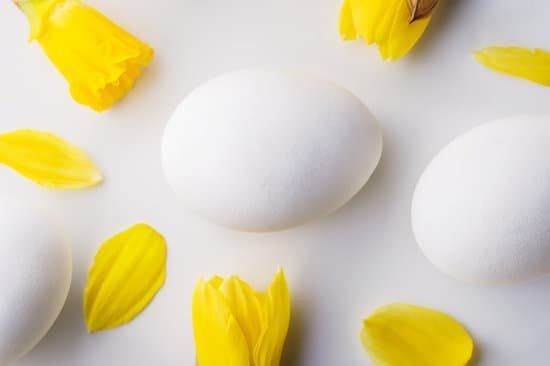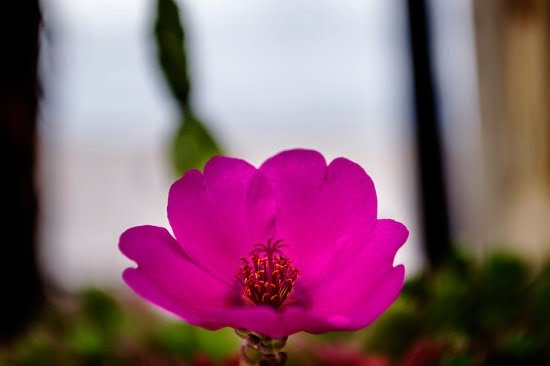Are you looking for sustainable gardening ideas to create a more eco-friendly and environmentally conscious garden? Sustainable gardening involves practices that are not only good for the environment but also contribute to the health and well-being of your garden. In this article, we will explore various techniques and tips to help you create a sustainable garden that thrives while minimizing its impact on the planet.
Gardening sustainably is all about working with nature rather than against it. By implementing sustainable gardening ideas, you can reduce your carbon footprint, conserve water, promote biodiversity, and create a beautiful and thriving garden that benefits both you and the environment. From choosing the right plants to utilizing organic pest control methods, there are numerous ways to incorporate sustainability into your gardening practices.
In this comprehensive guide, we will delve into topics such as the benefits of sustainable gardening, selecting the ideal plants for sustainability, organic pest control methods, water conservation techniques, composting and soil health practices, creating a wildlife-friendly garden, low maintenance tips, as well as vertical and container gardening ideas for those with limited outdoor spaces.
Whether you’re a seasoned gardener or just starting out, these sustainable gardening ideas will help you create a more environmentally friendly and flourishing garden.
Benefits of Sustainable Gardening
Sustainable gardening offers a multitude of benefits for both the environment and the gardener. By implementing sustainable gardening ideas, individuals can create beautiful outdoor spaces while minimizing their impact on the planet. Some of the key benefits of sustainable gardening include:
- Environmental Conservation: Sustainable gardening practices contribute to the conservation of natural resources such as water, soil, and biodiversity. By reducing the use of chemical fertilizers and pesticides, sustainable gardens help protect local ecosystems and wildlife.
- Cost Savings: Adopting sustainable gardening techniques can lead to long-term cost savings for gardeners. For example, practicing water conservation and composting can lower utility bills and reduce the need for store-bought fertilizers.
- Healthier Living Spaces: Sustainable gardens often result in healthier living spaces for humans and animals alike. By avoiding harmful chemicals, gardeners create safe environments for children, pets, and beneficial insects.
In addition to these benefits, sustainable gardening also fosters a deeper connection to nature and promotes greater self-sufficiency. As more individuals embrace sustainable gardening practices, communities are able to create more resilient food systems and reduce their overall ecological footprint.
Ultimately, the benefits of sustainable gardening extend far beyond individual gardens – they have the potential to positively impact entire ecosystems and enhance quality of life for generations to come. By incorporating sustainable gardening ideas into our outdoor spaces, we can all contribute to a healthier planet for future inhabitants.
Choosing the Right Plants for Sustainable Gardening
When it comes to sustainable gardening, choosing the right plants is crucial for the success of your garden. By selecting plants that are well-suited to your region’s climate and soil conditions, you can reduce the need for water, pesticides, and fertilizers, ultimately creating a more sustainable and environmentally friendly garden. In this section, we will explore some key considerations for choosing the right plants for sustainable gardening.
Native Plants
One of the best choices for sustainable gardening is to incorporate native plants into your garden. These are species that naturally occur in your region and are well-adapted to local conditions. Native plants typically require less water, fertilizer, and maintenance than non-native species, making them an excellent choice for a sustainable garden. Additionally, native plants provide habitat and food for local wildlife, further enhancing the biodiversity of your garden.
Drought-Tolerant Varieties
In regions with limited water resources, choosing drought-tolerant plant varieties is essential for sustainable gardening. These plants have evolved to thrive in arid conditions and require minimal watering once established. By incorporating drought-tolerant species into your garden, you can significantly reduce water consumption while still enjoying a beautiful and vibrant landscape.
Perennial Plants
Another important consideration for sustainable gardening is to include a variety of perennial plants in your garden. Unlike annuals, which need to be replanted each year, perennials return year after year, reducing the need for additional resources such as water and fertilizer. Additionally, many perennial species have deep root systems that help improve soil health and prevent erosion.
By carefully selecting native plants, drought-tolerant varieties, and perennial species for your garden, you can create a beautiful and thriving landscape while minimizing environmental impact. These simple yet effective choices are key elements of sustainable gardening practices that benefit both the environment and your local ecosystem.
Organic Pest Control Methods for a Sustainable Garden
When it comes to maintaining a sustainable garden, it is important to adopt organic pest control methods in order to protect the environment, as well as the health of your plants. Chemical pesticides can have harmful effects on the ecosystem, including the beneficial insects and organisms that play a vital role in maintaining a healthy garden. By choosing organic pest control methods, you can effectively manage pests while also promoting a more balanced and sustainable garden environment.
One effective organic pest control method is companion planting, which involves growing certain plants together to repel pests or attract beneficial insects. For example, planting marigolds alongside vegetables can help repel nematodes and other pests, while attracting pollinators such as bees and butterflies. Additionally, introducing insectary plants like yarrow and dill can attract predatory insects that feed on common garden pests, providing natural pest control.
Another sustainable approach to pest control is using physical barriers such as row covers and netting to protect vulnerable plants from pests. This method not only prevents pest infestations without the use of chemicals but also reduces the need for ongoing maintenance and intervention.
Furthermore, creating habitat for natural predators like birds, bats, and beneficial insects in your garden can help keep pest populations in check. Installing birdhouses or establishing native plantings that attract beneficial wildlife can contribute to an overall balanced ecosystem within your garden.
In addition to companion planting and physical barriers, organic solutions such as neem oil, garlic spray, and insecticidal soaps can be used to effectively manage common garden pests without harming beneficial insects or contaminating the soil. These natural remedies provide targeted control of problematic pests while minimizing negative impacts on the environment. By incorporating these organic pest control methods into your gardening practices, you can promote sustainability while maintaining a healthy and thriving garden ecosystem.
Water Conservation Techniques for Sustainable Gardening
Water is a precious resource, and sustainable gardening involves using it wisely. Here are some water conservation techniques to consider for your sustainable garden:
1. Drip Irrigation: Install a drip irrigation system to deliver water directly to the base of plants, reducing water waste from evaporation and runoff.
2. Mulching: Use organic mulch like wood chips or straw to help retain moisture in the soil, reduce evaporation, and prevent weed growth.
3. Collect Rainwater: Set up rain barrels or a rainwater harvesting system to collect and store rainwater for use in watering your garden. This reduces reliance on treated municipal water.
4. Group Plants by Watering Needs: When planning your garden layout, group plants with similar watering needs together. This ensures that no plant is over-watered, and helps conserve water.
5. Use Greywater: Consider reusing household greywater (from sources like laundry or shower) as an alternative water source for your garden.
Implementing these water conservation techniques not only helps in preserving this precious resource but also promotes healthier plant growth in your sustainable garden.
For more tips on sustainable gardening ideas related to water conservation, be sure to check out our resources on sustainable gardening techniques.
Composting and Soil Health in Sustainable Gardening
Composting is an essential component of sustainable gardening, as it provides a natural way to enrich the soil and reduce waste. By composting kitchen scraps, yard waste, and other organic materials, gardeners can create nutrient-rich soil amendments to support healthy plant growth. This not only reduces the need for chemical fertilizers but also minimizes the amount of organic matter sent to landfills, where it can contribute to greenhouse gas emissions.
In addition to composting, maintaining soil health is crucial for sustainable gardening practices. Healthy soil fosters robust plant growth and improves the overall resilience of the garden ecosystem. Techniques such as crop rotation, mulching, and cover cropping can help improve soil structure, increase water retention, and encourage beneficial microorganisms. By prioritizing soil health, gardeners can reduce the need for synthetic inputs while promoting long-term sustainability in their gardens.
For those interested in sustainable gardening ideas for improving soil health through composting and other methods, a variety of resources are available. Local agricultural extension offices often provide information on composting techniques and soil testing services to help gardeners understand their specific soil needs.
Additionally, there are numerous online guides and workshops dedicated to sustainable gardening practices that focus on composting and nurturing healthy soils. By tapping into these resources, gardeners can gain the knowledge and skills needed to cultivate thriving gardens through sustainable practices.
Creating a Wildlife-Friendly Garden
Understanding the Importance of Wildlife in Sustainable Gardening
Incorporating wildlife-friendly elements into your garden can play a significant role in sustainable gardening. By creating a habitat for birds, bees, butterflies, and other beneficial insects, you can help maintain a balanced ecosystem within your garden. These creatures contribute to pollination, pest control, and overall biodiversity, all of which are essential for sustainable gardening practices.
Planting Native Species
One of the most effective ways to attract wildlife to your garden is by planting native species. Native plants provide food and shelter for local wildlife and are better adapted to the climate and soil conditions in your area. Research the native plants that are best suited to your region and incorporate them into your garden design. Not only will you be supporting local ecosystems, but you’ll also reduce the need for excessive watering, fertilization, and pest control measures.
Creating Habitat Features
In addition to planting native species, you can enhance your garden’s wildlife appeal by incorporating specific habitat features. Installing bird feeders, birdhouses, butterfly gardens, and even small ponds or water features can attract different types of wildlife. Providing shelter such as rock piles or log piles can create homes for reptiles, amphibians, and small mammals. By diversifying the components of your garden, you’ll create a more welcoming environment for various species while promoting sustainable gardening practices.
By focusing on creating a wildlife-friendly garden with native plants and diverse habitat features, you can contribute to the overall health of your local ecosystem while implementing sustainable gardening ideas into your green space.
Low Maintenance Sustainable Gardening Tips
One of the key aspects of sustainable gardening is finding ways to maintain a beautiful garden with minimal effort. Low-maintenance gardening not only saves time and energy but also reduces the need for harmful chemicals and excessive water usage. Here are some tips for creating a low-maintenance, sustainable garden.
First, consider planting native species that are well-suited to your local climate and soil conditions. Native plants are often more resistant to pests and diseases, requiring less maintenance overall. Additionally, they typically require less water once established, making them an excellent choice for a sustainable garden.
Another low-maintenance idea is to create defined planting areas with mulch or ground cover. This can help to suppress weeds and reduce the need for ongoing maintenance such as weeding and mowing. Using natural materials like wood chips or straw can also improve soil health over time as they break down.
Finally, incorporating perennial plants into your garden design can significantly reduce the need for replanting each year. Perennials come back year after year, saving time, money, and resources in the long run. Some examples of low-maintenance perennials include lavender, coneflowers, and daylilies.
| Low-Maintenance Tip | Benefit |
|---|---|
| Plant native species | Resistant to pests and diseases, less water usage |
| Use mulch or ground cover | Suppresses weeds, reduces maintenance |
| Incorporate perennial plants | Saves time and resources in the long run |
Vertical Garden and Container Gardening Ideas for Small Spaces
For individuals with limited outdoor space, vertical gardening and container gardening are excellent options for creating a sustainable garden. Vertical gardens involve growing plants upwards rather than outwards, making them perfect for small balconies or patios. This method also maximizes the use of space by allowing you to grow herbs, vegetables, and flowers in a vertical arrangement. On the other hand, container gardening involves planting in pots or containers, making it suitable for those with limited ground space.
When it comes to vertical gardening, consider using trellises, wall-mounted planters, or hanging baskets to make the most of your available space. You can also repurpose items such as pallets or shoe organizers as innovative vertical garden structures. For container gardening, utilize different sized pots and containers to accommodate various types of plants while being mindful of proper drainage to avoid waterlogging.
In addition to their space-saving benefits, both vertical gardening and container gardening offer the advantage of easy maintenance and mobility. You can move your pots or planters around to optimize sunlight exposure while easily controlling soil conditions and moisture levels. By utilizing these sustainable gardening ideas for small spaces, you can still enjoy the benefits of growing your own produce and flowers without requiring a large plot of land.
| Vertical Garden | Container Gardening |
|---|---|
| Maximizes use of vertical space | Suitable for limited ground space |
| Utilizes trellises and hanging baskets | Involves planting in pots or containers |
| Mobility allows optimization of sunlight exposure | Easy maintenance and mobility |
Conclusion and Sustainable Gardening Resources
In conclusion, sustainable gardening offers a multitude of benefits for both the environment and gardeners. By choosing the right plants, implementing organic pest control methods, conserving water, and prioritizing soil health through composting, individuals can create beautiful and thriving gardens while minimizing their impact on the planet. Additionally, creating a wildlife-friendly garden not only promotes biodiversity but also contributes to the overall health of the ecosystem.
It’s important to note that sustainable gardening doesn’t have to be complicated or time-consuming. By incorporating low maintenance tips and utilizing vertical garden and container gardening ideas for small spaces, even those with limited time and space can participate in sustainable gardening practices.
For those looking to delve deeper into sustainable gardening, there are numerous resources available. From books and online articles to local workshops and community gardens, there are plenty of opportunities to learn more about sustainable gardening and connect with like-minded individuals. Overall, by embracing sustainable gardening ideas, we can all play a role in promoting environmental stewardship and creating a healthier planet for future generations.

Welcome to my gardening blog! I am passionate about plants and enjoy sharing my knowledge and experiences with others. In this blog, I will write about everything related to gardening, from tips on how to get started to updates on my own garden projects.





